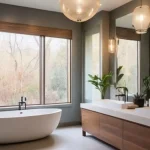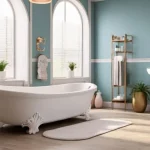Embarking on a bathroom remodel can be an exciting journey, but it’s also one that comes with its fair share of challenges. Whether you’re updating your space to enhance comfort or boost your home’s value, the road to a successful renovation is paved with careful planning and smart decisions.
Unfortunately, many homeowners encounter common pitfalls that can turn their dream bathroom into a frustrating ordeal. From oversights in budgeting to mishaps with plumbing, these mistakes can cost time, money, and peace of mind.
Through some of the most frequent bathroom remodeling mistakes and provide practical tips to help you steer clear of them. Think of this as your friendly roadmap to a smoother, more satisfying renovation experience!
Inadequate Planning and Budgeting
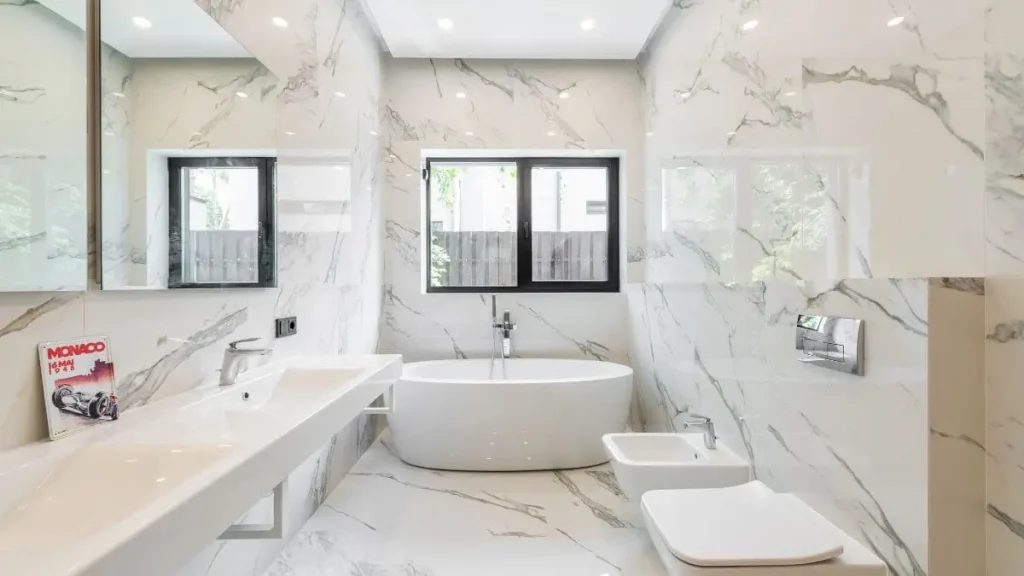
The Importance of a Detailed Plan
One of the biggest bathroom remodeling mistakes is diving into a project without a well-thought-out plan. Imagine setting off on a road trip without a map—you might end up lost or stuck in a few unexpected detours.
The same principle applies to remodeling. A detailed plan is crucial to ensure that your vision becomes a reality without unnecessary hiccups.
Start by mapping out your ideal bathroom layout. Consider how you use the space and what changes would improve functionality.
Are you dreaming of a spa-like retreat with a soaking tub and separate shower, or do you need a more practical setup with plenty of storage? Sketching your ideas, even if it’s just a rough draft, can help you visualize the end result and identify any potential issues before they arise.
Budgeting Wisely
Another common mistake is underestimating the costs involved in a bathroom remodel. It’s easy to fall into the trap of thinking that a basic remodel won’t break the bank, but expenses can add up quickly.
From labor costs to materials and unexpected surprises, having a realistic budget is essential to avoid financial stress.
Begin by creating a detailed budget that includes all potential expenses. Don’t forget to account for high-quality materials, labor, and any additional costs like permits or unforeseen repairs.
It’s also wise to set aside a contingency fund—typically 10-20% of your total budget—to cover unexpected costs that might pop up during the project.
Practical Tip: To keep your budget on track, consider using budgeting tools or apps designed for home renovations. They can help you monitor expenses and stay within your financial limits.
Relatable Anecdote: A friend of mine once started a bathroom remodel with a vague budget and a loose plan. Midway through the project, they realized they had spent far more than anticipated because they hadn’t factored in the costs of upgraded fixtures and unexpected plumbing repairs.
Their project ended up taking longer and costing more than they’d hoped—an experience they wished they’d avoided with better planning and budgeting.
Taking the time to plan thoroughly and budget carefully, you’ll set the stage for a smoother remodeling process and a final result that meets both your needs and your expectations. Stay tuned as we delve into more common mistakes and how you can avoid them!
Recommended: Guide to Bathroom Remodeling Costs
Ignoring Plumbing and Electrical Considerations
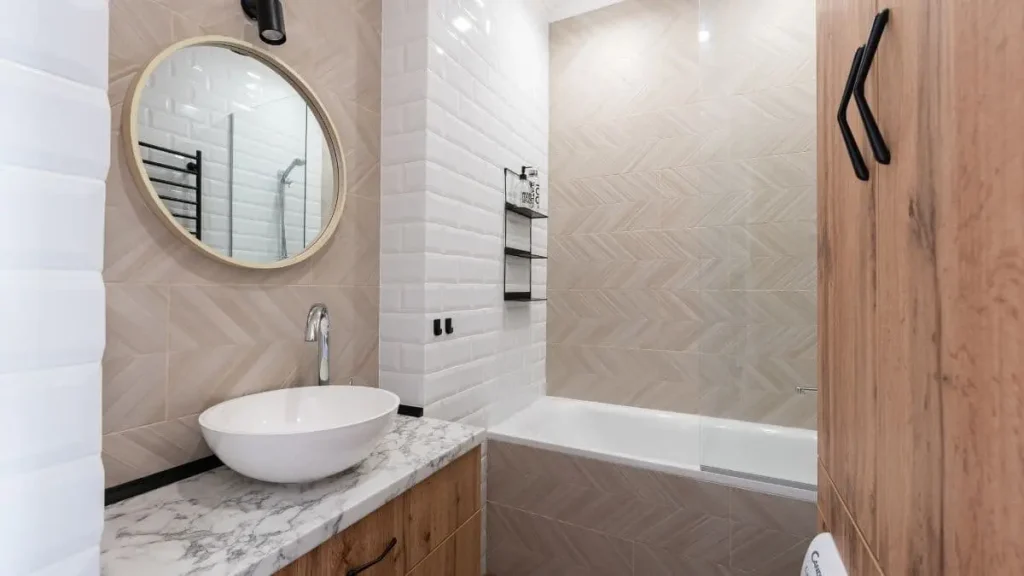
Plumbing Pitfalls
When it comes to bathroom remodeling, overlooking plumbing considerations is a recipe for disaster. Imagine you’ve just finished a beautiful new bathroom, only to discover that the water pressure is weak or the fixtures don’t align properly with the existing plumbing.
These issues can be costly and time-consuming to fix, and they often stem from not paying enough attention to plumbing details early on.
One common mistake is improper placement of fixtures. For example, if you’re moving the toilet or sink to a new location, you’ll need to ensure that the plumbing lines are appropriately adjusted.
Failing to do so can result in costly rework and delays. Always consult with a professional plumber to ensure that your new layout is feasible and that all plumbing changes are correctly executed.
Tip: Before starting your remodel, get a professional plumber to inspect your current plumbing system. They can provide valuable insights and help you avoid costly mistakes.
Electrical Errors
Electrical considerations are another area where homeowners often run into trouble. Inadequate lighting, poorly placed outlets, and insufficient power supply can turn a well-designed bathroom into a frustrating space to use.
One frequent mistake is not planning for sufficient lighting. Bathrooms need a combination of task lighting (for grooming) and ambient lighting (for overall illumination). Poorly planned lighting can result in shadows and make daily routines less convenient. Additionally, placing outlets in inconvenient spots can lead to a cluttered and less functional space.
Tip: Hire a licensed electrician to assess your bathroom’s electrical needs. They can ensure that your lighting and outlets are optimally placed and that everything is up to code.
Relatable Anecdote: A colleague of mine once renovated their bathroom without fully considering the electrical setup. They ended up with only one outlet in a highly inconvenient location, which made using electrical appliances like hairdryers and razors a real hassle. It was a lesson learned the hard way about the importance of planning electrical needs from the start.
Choosing the Wrong Materials
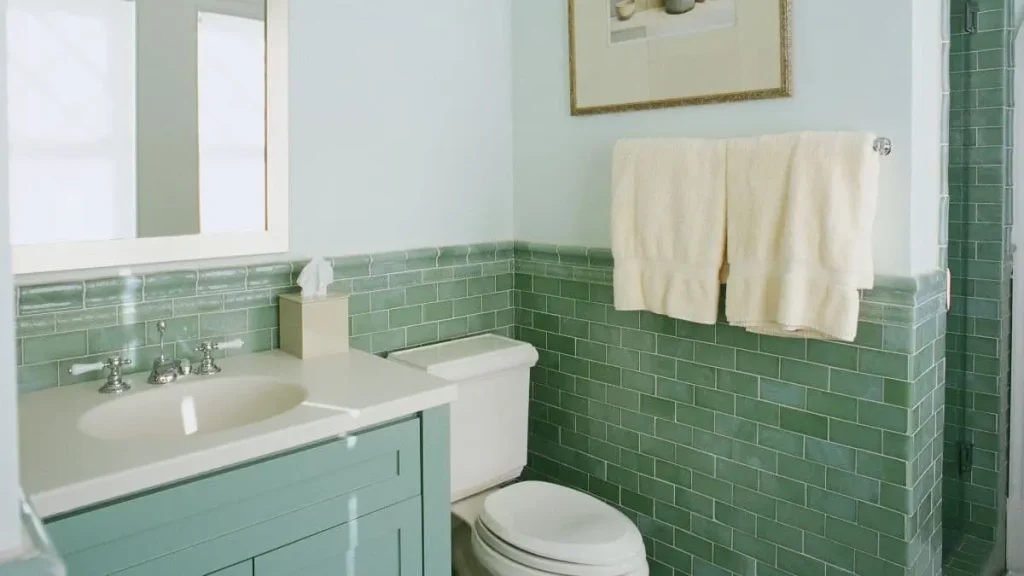
Impact of Poor Material Choices
Selecting the wrong materials for your bathroom remodel can lead to a host of issues, from durability problems to aesthetic mismatches. For instance, using regular drywall in a bathroom that doesn’t have proper ventilation can result in mold growth and damage.
Similarly, choosing low-quality tiles or fixtures might save you money upfront but could cost more in the long run due to frequent replacements or repairs.
One common mistake is opting for materials that aren’t moisture-resistant. Bathrooms are high-humidity areas, and materials like wood or certain types of paint may not hold up well over time. Ensure that all materials used, from flooring to wall coverings, are suitable for the bathroom environment.
Tip: Invest in high-quality, moisture-resistant materials. Look for tiles, paint, and fixtures specifically designed for bathrooms to ensure longevity and maintain a fresh look.
Choosing the Right Materials
Another aspect of choosing materials is making sure they align with your overall design vision. It’s easy to fall in love with a particular style or finish, but it’s important to consider how well it will fit with the rest of your bathroom’s design and color scheme.
Tip: When selecting materials, bring samples home and see how they look in your bathroom’s lighting. This can help you make better decisions and avoid potential mismatches.
Relatable Anecdote: I once worked with a client who chose beautiful but highly porous tiles for their bathroom floor. They were initially drawn to the tiles’ aesthetic appeal but didn’t consider their suitability for a high-moisture environment. The tiles quickly became stained and difficult to clean, leading to extra costs and a less-than-ideal outcome.
Paying close attention to plumbing, electrical considerations, and material choices, you’ll set yourself up for a smoother remodeling experience and a bathroom that you can enjoy for years to come. Stay tuned for more tips on avoiding common remodeling mistakes!
Skipping Ventilation
The Importance of Proper Ventilation
One often overlooked aspect of bathroom remodeling is proper ventilation. Bathrooms are naturally prone to high humidity, which can lead to mold, mildew, and unpleasant odors if not managed correctly. Skipping this critical step can result in costly repairs and a less-than-ideal bathroom experience.
Proper ventilation helps to remove excess moisture from the air, reducing the risk of mold growth and keeping your bathroom fresh. Without it, you might find yourself dealing with persistent dampness and a musty smell that no amount of cleaning can eliminate.
Tip: Install an exhaust fan that is appropriately sized for your bathroom. A fan with a higher cubic feet per minute (CFM) rating will be more effective at removing moisture and improving air quality. Make sure the fan is vented to the outside and not just into the attic.
Installation Tips
When installing ventilation, it’s essential to place the fan where it can effectively capture steam and moisture. For optimal performance, position the fan near the shower or bathtub, and ensure that it’s on a separate switch from the bathroom lighting to allow for extended ventilation after showers.
Relatable Anecdote: A client of mine neglected to install a proper ventilation fan during their bathroom remodel. Within months, they started noticing mold on the walls and a persistent damp smell. They had to go back and add a fan, which not only added to their costs but also disrupted their newly renovated space.
Overlooking Lighting and Electrical Fixtures
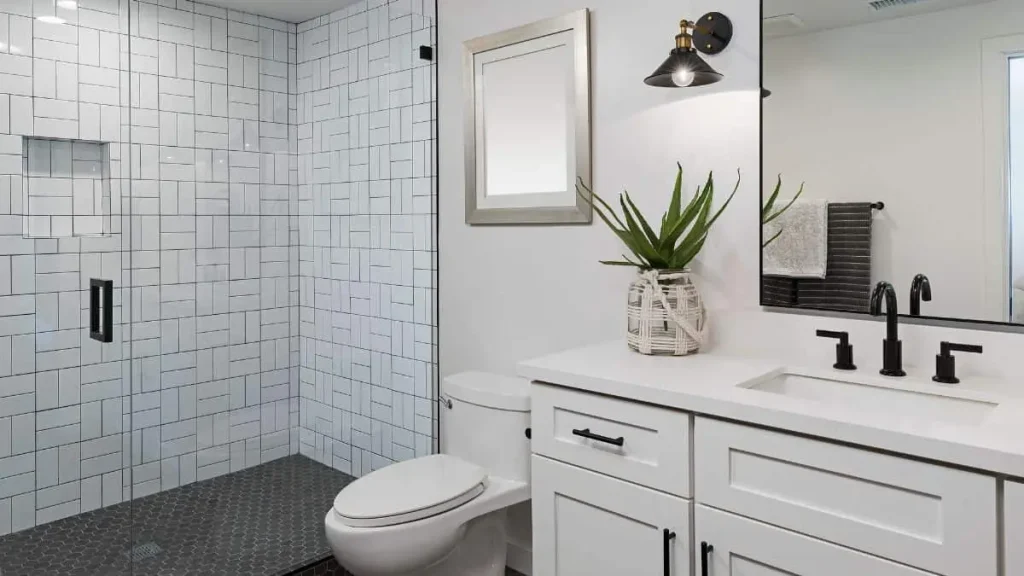
Lighting Mistakes
Lighting is more than just a practical necessity in a bathroom—it’s a crucial element of design that can greatly impact the space’s functionality and ambiance. One common mistake is installing insufficient lighting, which can make tasks like shaving or applying makeup challenging. Conversely, poorly placed lighting can create harsh shadows or create an uninviting atmosphere.
Tip: Incorporate a mix of lighting types, including ambient, task, and accent lighting. Use bright, clear light around mirrors for tasks, and opt for softer, ambient lighting to create a relaxing atmosphere. Consider using dimmable lights to adjust the ambiance based on your needs.
Electrical Fixture Placement
Proper placement of electrical fixtures is also vital. Common errors include having too few outlets or placing them in inconvenient locations. For example, if outlets are not strategically placed, you might find yourself juggling appliances or relying on extension cords, which can be both inconvenient and unsafe.
Tip: Plan the placement of electrical outlets to ensure they’re accessible and functional. Consider adding extra outlets where they might be needed, such as near the sink or near a countertop. Also, make sure that all fixtures and outlets comply with local electrical codes.
Relatable Anecdote: A homeowner I know installed a beautiful chandelier in their bathroom but soon realized that the placement wasn’t practical for daily use. The lighting was either too dim for grooming tasks or too harsh for a relaxing bath.
They ended up adding additional lighting fixtures to balance functionality and aesthetics, which could have been avoided with better planning.
Addressing ventilation and lighting considerations early in your bathroom remodel, you can avoid common mistakes that lead to discomfort and additional expenses. With proper planning and attention to detail, your bathroom will not only look great but also function effectively for years to come.
Recommended: Bathroom Remodel Checklist
Neglecting Storage Solutions
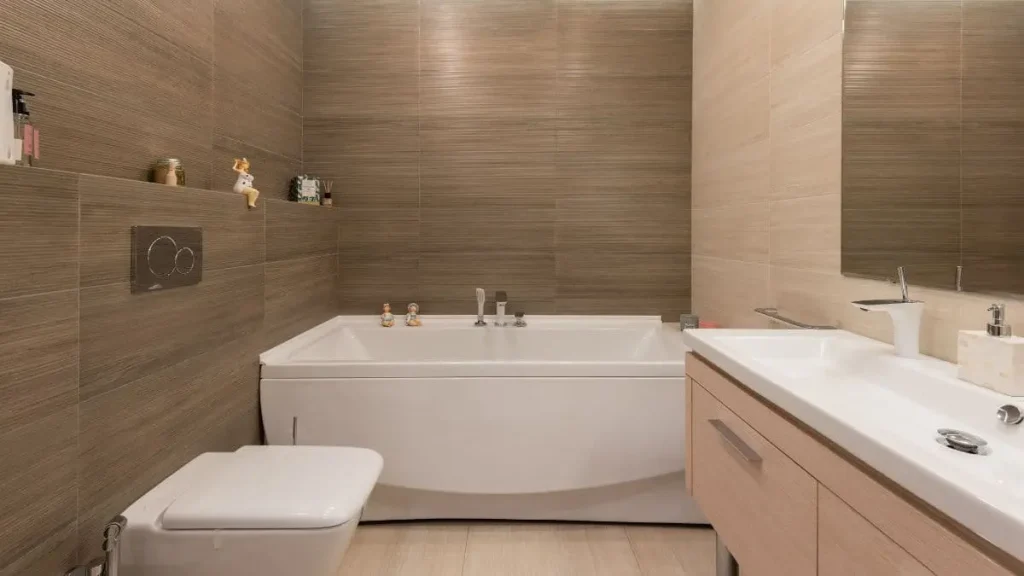
Storage Design Mistakes
One often-overlooked aspect of bathroom remodeling is the inclusion of adequate storage solutions. Neglecting to plan for storage can lead to a cluttered and inefficient space where essentials are crammed into every available nook and cranny. This not only affects the overall functionality but can also diminish the aesthetic appeal of your bathroom.
Common storage mistakes include failing to incorporate enough cabinetry or shelving, or not considering the storage needs of all household members. For example, if you’re remodeling a family bathroom, you might need more storage space for items like towels, toiletries, and cleaning supplies.
Tip: Evaluate your storage needs before starting the remodel. Think about what items you need to store and where you can add cabinets, shelves, or drawers. Consider incorporating built-in storage solutions, such as medicine cabinets with additional shelving or vanities with ample drawer space.
Maximizing Space
If you’re working with a smaller bathroom, optimizing storage becomes even more critical. Utilizing vertical space, such as high cabinets or floating shelves, can help keep the floor area clear and make the room feel more spacious. Additionally, consider multi-functional furniture, such as a vanity with built-in storage or a bench with hidden compartments.
Relatable Anecdote: A friend of mine remodeled their bathroom but didn’t prioritize storage solutions. They ended up with a small vanity and minimal cabinetry, which quickly became cluttered. They later had to add extra shelving and organizers, which disrupted their newly renovated space and added extra costs.
Forgetting About Accessibility and Safety

Importance of Accessibility
Accessibility should be a key consideration in any bathroom remodel, especially if you plan to stay in your home for many years or if you have family members with varying needs. Designing with accessibility in mind ensures that your bathroom remains functional and comfortable for everyone, regardless of age or mobility.
Common accessibility features include grab bars near the toilet and shower, a walk-in shower with a low or no threshold, and a bench or seat in the shower area. These features not only enhance safety but also provide convenience and ease of use.
Tip: When planning your remodel, consider the needs of all potential users. If you’re unsure what features to include, consult with a designer who specializes in accessible design or refer to guidelines from organizations like the Americans with Disabilities Act (ADA).
Safety Considerations
Ensuring safety in your bathroom is just as important as enhancing accessibility. Common safety features include slip-resistant flooring, well-placed grab bars, and adequate lighting to prevent accidents. It’s also essential to choose materials that are easy to clean and maintain, reducing the risk of accidents caused by mold or mildew.
Tip: Install slip-resistant tiles or vinyl flooring to reduce the risk of slips and falls. Place grab bars in strategic locations, such as near the toilet and in the shower or tub area. Ensure that all fixtures and hardware are securely installed to avoid potential hazards.
Relatable Anecdote: A client of mine had a beautiful new bathroom but hadn’t considered accessibility features. After a family member with limited mobility moved in, they had to make additional modifications, including installing grab bars and a walk-in shower. The added changes were more disruptive and costly than if they had been included from the start.
Incorporating thoughtful storage solutions and considering accessibility and safety, you can create a bathroom that is both functional and inviting. Paying attention to these details ensures that your remodel not only enhances your space’s beauty but also its practicality and comfort.
Not Hiring the Right Professionals
The Risks of DIY and Unqualified Help
Choosing the right professionals for your bathroom remodel is crucial to ensuring a successful outcome. One of the most significant bathroom remodeling mistakes is attempting to cut costs by hiring unqualified individuals or handling everything yourself.
While DIY projects can be rewarding, bathroom remodeling involves specialized skills that are often best left to professionals.
A common pitfall is hiring a general contractor who lacks experience with bathroom remodels or attempting to perform complex tasks like electrical or plumbing work without proper expertise. This can lead to subpar results, safety hazards, and costly rework.
Tip: When hiring professionals, look for contractors, electricians, and plumbers with experience in bathroom remodels. Check their credentials, read reviews, and ask for references to ensure you’re working with qualified individuals.
Choosing the Right Professionals
It’s also essential to have a clear contract and detailed scope of work with your chosen professionals. This helps set expectations and ensures that everyone is on the same page regarding the project’s timeline, costs, and deliverables.
Relatable Anecdote: I once worked with a homeowner who decided to handle the plumbing and electrical work themselves to save money. Unfortunately, their lack of expertise led to several issues, including leaks and electrical problems that required professional repairs. In the end, they spent more money fixing the mistakes than if they had hired experienced professionals from the start.
Failing to Follow Building Codes and Regulations
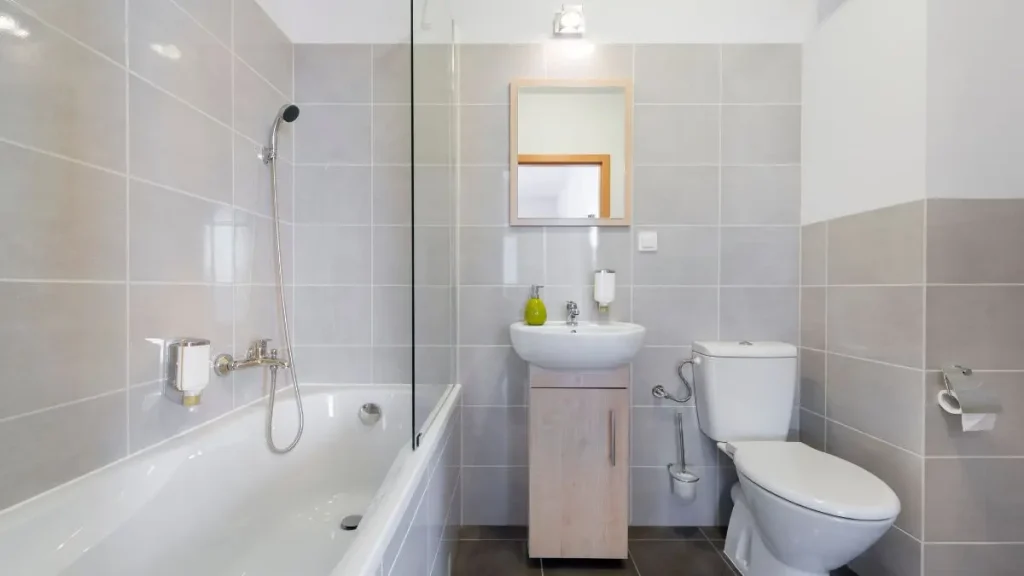
Understanding Building Codes
Building codes and regulations are in place to ensure safety, structural integrity, and proper functionality of home improvements. One of the most critical bathroom remodeling mistakes is neglecting to follow these codes, which can result in significant issues, including fines, delays, and potentially unsafe conditions.
For example, proper ventilation and electrical installations must comply with local building codes to prevent moisture buildup and electrical hazards. Not adhering to these regulations can lead to health risks, such as mold growth or electrical fires.
Tip: Before starting your remodel, familiarize yourself with local building codes and regulations. Many municipalities have specific requirements for bathroom remodels, including those related to plumbing, electrical work, and ventilation.
Obtaining Permits
Another essential aspect of following building codes is obtaining the necessary permits. Failing to do so can result in legal issues and complications when selling your home in the future. Permits ensure that the work is inspected and approved by local authorities, providing an added layer of protection for your home.
Tip: Check with your local building department to determine which permits you need for your remodel. Ensure that your contractor is aware of and obtains these permits as required.
Relatable Anecdote: A client of mine completed a beautiful bathroom remodel but failed to obtain the necessary permits. When they decided to sell their home, the lack of permits became a major issue, resulting in delays and additional costs to rectify the situation. They learned the hard way that adhering to building codes and obtaining permits is crucial for a smooth remodeling experience.
Hiring the right professionals and following building codes and regulations, you’ll help ensure that your bathroom remodel is both successful and compliant. These steps are essential for achieving a high-quality result that enhances your home’s safety and value.
Rushing the Remodeling Process
The Dangers of Hurrying
One of the most common bathroom remodeling mistakes is rushing the process. It’s understandable to want your new bathroom completed as quickly as possible, but hurrying through the remodel can lead to a range of problems, from subpar workmanship to missed details that can affect the overall quality and functionality of the space.
When you rush a remodel, there’s a higher chance that critical steps may be overlooked. This can result in issues like poorly installed fixtures, inadequate ventilation, or a design that doesn’t fully meet your needs. Additionally, a rushed job can lead to mistakes that might require costly corrections down the line.
Tip: Allow ample time for each phase of the remodeling process, including planning, construction, and finishing touches. A well-thought-out timeline ensures that each aspect of the project receives the attention it deserves and that the final result meets your expectations.
Balancing Speed and Quality
While it’s important to keep the project moving, balancing speed with quality is crucial. Rushing can compromise the quality of materials used, the precision of installation, and the overall outcome. Make sure to work with your contractor to establish a realistic timeline that allows for thorough work without unnecessary delays.
Tip: Communicate clearly with your contractor about project milestones and deadlines. Regular check-ins can help ensure that the project is progressing smoothly and allow you to address any issues as they arise.
Relatable Anecdote: A homeowner I worked with wanted their bathroom remodeled before hosting a big family gathering. In their rush to finish, they pushed the contractor to work faster than usual.
As a result, the remodel was completed, but there were several issues with the installation, such as misaligned tiles and a leaky faucet. They ended up having to bring the contractor back for repairs, which was more disruptive and costly than if they had allowed adequate time for the work.
Final Thoughts
Rushing through a bathroom remodel often leads to shortcuts and mistakes that can compromise the overall quality of your renovation. By taking the time to plan thoroughly, communicate effectively, and allow for a reasonable timeline, you can ensure that your bathroom remodel is completed to a high standard and meets your expectations.
Conclusion
Successfully remodeling your bathroom requires more than just a vision; it demands careful consideration and execution. By avoiding common bathroom remodeling mistakes, such as inadequate planning, neglecting ventilation, and failing to follow building codes, you can ensure a smoother and more satisfying renovation experience.
Addressing these issues proactively helps you create a bathroom that not only looks great but functions efficiently and meets safety standards. Investing time in proper planning, choosing the right materials, hiring qualified professionals, and adhering to regulations will lead to a final result that enhances both your home’s value and your daily comfort.
Remember, a well-thought-out remodel is a worthwhile endeavor that pays off in long-term benefits. With these insights and tips, you’re well-prepared to navigate your bathroom renovation with confidence and achieve the perfect balance of style and practicality. Enjoy the process and the end result—a space that truly feels like your own.


